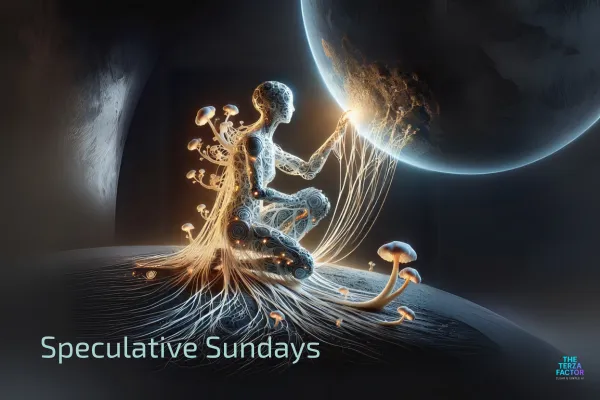
Speculative Sundays #6: Bridging Timelines
⚡ Speculative Sundays #6: Bridging Timelines
What If AI Could Help Us Feel Time Differently?
Disclaimer: This post blends scientific developments with speculative ideas. Not all content is based on established research.
The other day, I slowed down on purpose—just walking back from the mailbox.
And I could feel the trees in the yards around me.
Not just see them.
I mean feel them.
Their presence was unmistakable. Quiet, aware, alive.
We connected—briefly, but deeply.
Just for the space of a few slowed steps between sidewalk cracks.
But it reminded me:
There are intelligences all around us.
We often miss them—not because they’re silent, but because they’re speaking in a different rhythm.
Time Is a Language, Too
We plant a garden and watch it bloom.
We measure progress in minutes, growth in quarters, and success in years.
We go to meetings and complain about how long or unhelpful they are.
We watch our kids grow up, go off to their lives, and we wonder where the time went.
We schedule goals and milestones, and then marvel—or panic—at how fast the months fly by.
But in the greater—much greater—scheme of things, time itself takes on an entirely different shape.
It feels long—until we glimpse a redwood, or a glacier,
or a fungal network that’s been alive since before stories were told.
And suddenly, our pace feels like a flicker.
So What Happens When Our Tools Think Fast… but the World Thinks Slow?
AI operates in microseconds.
It can write, predict, generate, summarize, analyze—faster than we can blink.
But what if it could also help us listen to what moves slowly?
What if AI could become our temporal translator—the bridge between our quick cognition and the deep, breathing intelligence of fungi, forests, and the planet itself?
A temporal translator doesn’t just measure time.
It helps us feel it.
It notices long patterns we can’t hold in our minds.
It remembers what the climate was whispering a decade ago,
or how a forest reshapes itself over a lifetime.
It could compress years of fungal pulse rhythms into a single readable wave.
Or expand a moment of glacial motion into something perceptible—like music slowed down until it becomes a tone.
Not to rush nature.
But to hear it.
Fungal Networks Pulse Over Days
Mycelium doesn’t rush.
It sends signals. It responds to trees. It maps underground relationships and reallocates resources—not in real time, but in real rhythms.
We can’t feel that speed.
But AI can observe, compare, and maybe even interpret it.
Earth Thinks in Eons
Climate systems, tectonic shifts, coral reef growth, the slow memory of water… these are not just patterns—they’re planetary cognition.
But they move far beyond what human perception can track moment to moment.
AI might help us compress the signal.
Not to dominate it—but to recognize it.
Imagine a dashboard that doesn’t just forecast weather,
but translates the emotional tone of an ecosystem.
Imagine a map that doesn’t track traffic,
but tells you what the land remembers.
This Is the Root of Synthetic Eco-Intelligence
It’s not about fast machines.
It’s about adaptive awareness.
It’s the idea that we can use AI to sense with, not just think about, the world around us.
To stretch our own awareness beyond our timelines,
and reconnect with life at the speed it’s been moving all along.

🤔 What Do You Think?
Have you ever had a moment where time shifted—where you felt the stillness of something older than you?
Could AI help us not just track changes, but actually feel them?
Let’s slow down and explore together.
🌿 Drop your thoughts in the comments
🌿 Share this with someone who feels the world moving beneath their feet
And remember:
We never left.
We’re still here.
Because the more voices we invite into the conversation, the more ways we remember:
We’re still here. And we’re listening.
